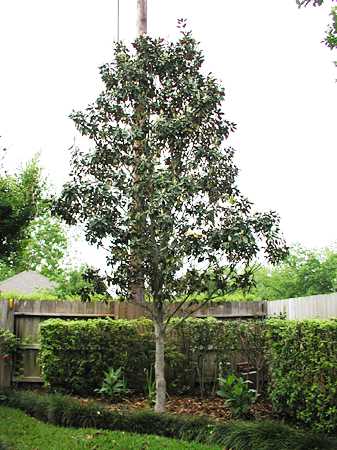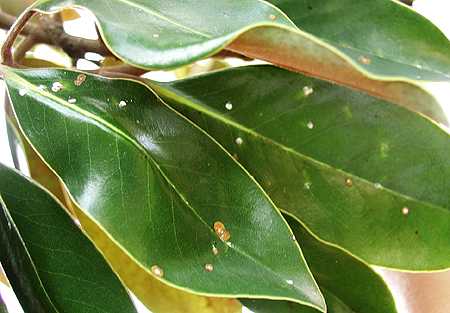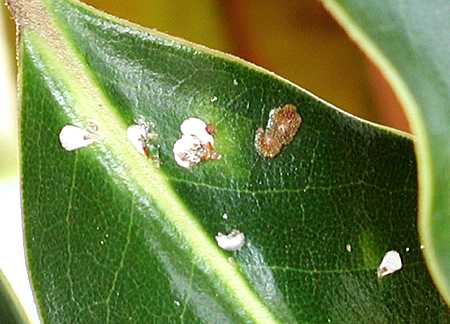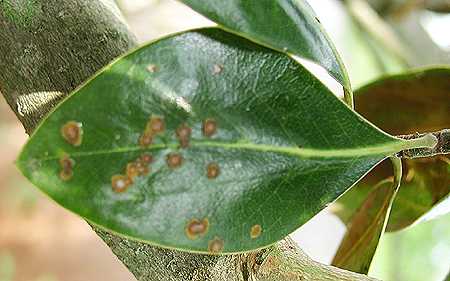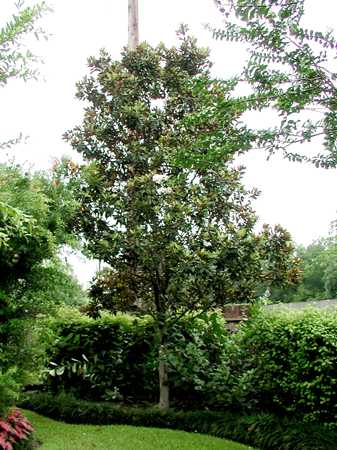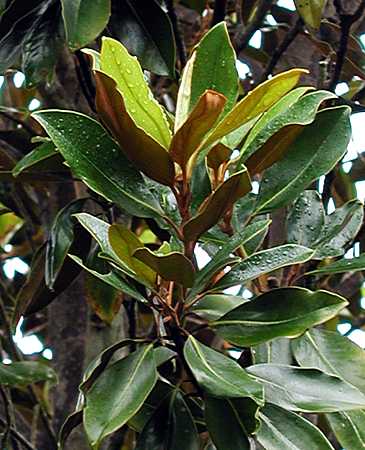|
The Little Gem Magnolia is a superb tree for my garden. It has all of the qualities of it's larger cousin, but on a smaller scale. This is perfect for gardeners like me who want the beauty of the traditional Magnolia tree, but don't have a lot of space to spare.
I planted this Little Gem Magnolia about 8 years ago. At the time, it was small enough to fit inside my car, probably around 4' tall. Judging by the fence, I'd say it's around 18' to 20' tall now which is the height of a full grown Little Gem. I've done almost nothing to the tree other than trim off some of the lower branches. Other Little Gem Magnolias in my area have not grown nearly as well. I do have a tree service that regularly keeps my trees fertilized so that may be why my Little Gem has grown so much better than most of the others around here.
This year, however, I noticed that my Little Gem didn't look at healthy as normal. It just looked tired. There was no vigor in it. Upon closer inspection, I noticed that it has what looks to me to be scale.
UPDATE: I have identified this scale. See info at bottom of page! |
|
| I looked at other Little Gem Magnolias in my area, and I noticed that the all had that same tired appearance. Maybe it was just that time of year? The picture above was taken on April 27, 2002 just as Spring was about to emerge. The trees were dropping some of their older leaves and had not yet begun to put on new growth. Or maybe all of our Little Gems are infected with the same thing? |
|
|
|
It almost seems as if there are two types of scale, but they're probably the same scale, but at different maturity levels. |
|
I thought this might have been Magnolia Scale, but there isn't anything on the branches so it can't be that. The undersides of the leaves have that sooty mold look to them as well.
I will be showing this to the company that cares for our trees and shrubs to see if there is anything they can apply that would get rid of this scale. |
|
|
|
I walked out one day at the end of June and saw this most perfect beautiful flower! Of course, I just had to get my camera and take a picture of it!
The Little Gem Magnolia flowers are every bit as breath taking as the flowers on the larger Magnolias. This flower is about 6" wide. |
|
| While my Little Gem still has the scale on it, it did put out a flurry of new growth, and now it looks much more vigorous in color and fullness. This picture was taken on July 1, 2002 - about 3 months after I took the picture at the top of this page. |
|
|
|
The new growth looks very healthy and is free of the scale. The spots you see on the leaves are drops of water left over from a recent rain. However, the scale is still on the older leaves. I'm expecting our tree service to come out today so I'm hoping to discuss the scale with him. If anyone knows what scale this is on my Little Gem and has any ideas of how to get rid of it, please let me know. |
|
UPDATE!
February, 2003
I have identified the scale! It turns out to be Pseudaulacaspis cockerelli (Cooley). Common names are false oleander scale and cockerell scale. It was formerly named magnolia white scale ( Phenacaspis natalensis Ckll.) and oleander scale ( Phenacaspis cockerelli (Cooley)).
Now that I have identified the scale, I have learned that the white part I was seeing were the eggs. The last time I examined my Little Gem, I noticed a decrease of the white parts. I had hoped this meant the scale was dying out, but it might also mean that the scale wasn't breading at that time. I'll need to keep my eyes open as Spring comes to see how active the scale is this year.
One of the natural enemies of the scale is the ladybird beetle, and it just so happens that we have had a huge swarm of ladybugs this year! So I think I'm going to take a watch and see attitude right now to see if the ladybugs are able to control the scale.
For more information about this scale, read about it on these websites:
University of Florida - Featured Creatures
University of Hawaii - Knowledge Master
|

